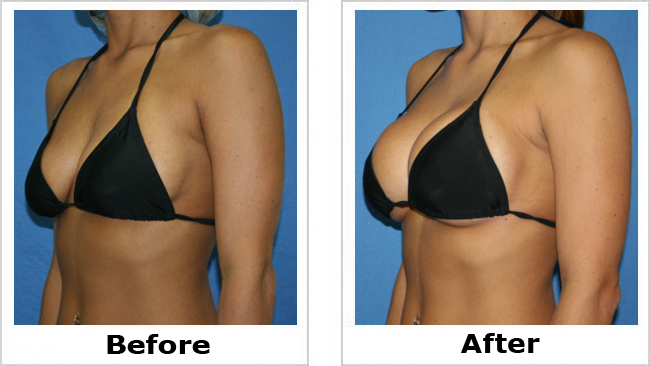What you need to know about Breast Implant Revision
Contents
- 1 What you need to know about Breast Implant Revision
- 2 What does the Procedure Involve?
- 3 How Long Should I Stay at my Destination?
- 4 What’s the Recovery Time?
- 5 What About Aftercare?
- 6 What’s the Success Rate?
- 7 Are there Alternatives to Breast Implant Revision?
- 8 What Should You Expect Before and After the Procedure
Breast implant revision is a surgical procedure to replace old breast implants with new implants. There are various factors that cause a patient to consider getting a breast implant revision. Some of the top factors include:
-
Desire to change breast size – sometimes, patients change their minds and want a smaller or bigger breast size.
-
Concern about implant deflation or malposition – saline implants can rupture or leak, causing deflated and sagging breasts. In other cases, the implants can drift out of the desired position.
-
Pain from capsular contracture – capsular contracture is a condition in which the body forms a capsule (scar tissue) around the breast implant. The capsule can become thicker, tighter, and harder. This can result in discomfort and, sometimes, pain.
-
Changes in the appearance of the implant – One of the main goals of breast implant revision is to improve or change the appearance of the breast while updating the implant material. This is because changes can occur within the breast implant and the overlying breast tissue over time, causing an appearance that is less desirable than the original result.

What does the Procedure Involve?
During breast implant revision, general anesthesia or intravenous sedation will be administered for your comfort. Incisions will be created in order to access the implants. Your surgeon will most likely use the same incisions as in your original breast implant surgery. There are three types of incision:
-
Peri-areolar incision – incision all the way or part way around an areola.
-
Inframammary incision – incisions made in the crease under the breast.
-
Breast lift incision – either Wise pattern incision or a vertical incision.
Once the incisions are made, your surgeon will change the size of the implant, change the type of the implant, or correct any issues. The details of what happens during the surgery depend on the issue being addressed. After your surgeon is finished, they will close the skin incisions with sutures, skin adhesives, clips, or tapes. Depending on the type of revision required, breast revision surgery may take around one to three hours to complete.
How Long Should I Stay at my Destination?
Breast implant revision is typically done as an outpatient procedure, which means you should be able to go home on the same day. It is recommended that you stay in the local area for 7 to 10 more days after the surgery to let your body recover and to attend follow-up checkups. During one of the follow-up checkups, your stitches will be removed.
What’s the Recovery Time?
You can usually expect to go back to work (desk job) within 1 to 2 weeks following your breast implant revision surgery. For manual labor jobs, you need to wait at least 3 to 4 weeks until you can return to work. Any strenuous activities, like vigorous exercise and heavy lifting, should be avoided for about 3 weeks. You will likely have visible bruising, but they will subside within 2 weeks. Also, swelling will begin to resolve within 3 weeks.
What About Aftercare?
Your surgeon will give you post-operative instructions. It is important that you follow the instructions closely in order to have a smooth and quick recovery. Here are some points that you should consider following the surgery:
Keep your head elevated while resting. At least for the first 24 hours, keep your head and shoulders elevated on 2 pillows while resting.
A light diet. Begin taking liquids slowly and progress to jello or soups immediately after your surgery. You may be able to start a regular diet the next day.
Pain control. Your surgeon may prescribe pain medication to help with your pain or discomfort. Always ensure to take the medication as prescribed, not only when you feel the pain.
Showering. You may be allowed to shower 2 days following the surgery. However, avoid applying full showerhead pressure to the incisions. You should also avoid soaking underwater in a pool or a tub.
Surgical bra. You should wear surgical bras until your surgeon says that you may wear an alternative. Make sure to bring a sports bra without an underwire that clips in the front to use as the alternative bra.
Drains. In some rare cases, small drains are placed to draw off any accumulating fluid after surgery. These drains are usually removed within 48 hours.
Wound care. Make sure that the surgery site is clean. Before you touch your bandages or get near the incision site, always wash your hands.
What’s the Success Rate?
Breast implant revision is a generally safe procedure and has a very high success rate when performed by an experienced plastic surgeon. Most patients recover from the surgery smoothly, with no further complications. However, as with any surgical procedures, breast implant revision still carries some possible risks and side effects. These include:
-
Bleeding
-
Poor healing of incisions
-
Infection
-
Hematoma
-
Anesthesia risks
-
Seroma (fluid accumulation)
-
Numbness
-
Skin loss
-
Prolonged swelling
-
Skin discoloration
-
Asymmetry
-
Deep vein thrombosis
-
Fat necrosis
-
Recurrent looseness of skin
-
Persistent pain
-
The possible need for another revision surgery.
Keep in mind that breast implant revision surgery is not a standard or routine procedure. It needs to be tailored specifically to your desires and goal. Therefore, always choose a board-certified plastic surgeon who is experienced and well-trained in all types of breast surgery, and who will listen to your specific goal and desires.
Are there Alternatives to Breast Implant Revision?
There is currently no alternative to breast implant revision. If you have any problems with your implants or you want to change the size of it, breast implant revision is the safest available procedure. In most cases, you have the option to simply remove the implants without having a reconstruction (placing new implants in your breasts).
What Should You Expect Before and After the Procedure
Before breast implant revision, you may have some issues with your breast implants that need to be addressed. After the procedure, any issue will be corrected. The surgery should leave you with well-placed and functional implants with an appearance and feel that match your current preference. Note that it can take about 6 to 12 months for your breasts to feel “normal” again.
For an in-depth analysis of a Breast Implant Revision Procedure, watch this short video.
To check prices or to book a Breast Implant Revision Procedure, in Thailand or anywhere else in the world, head on over to MyMediTravel now!

